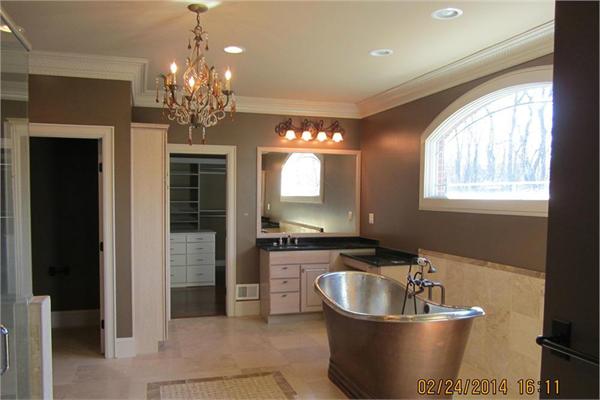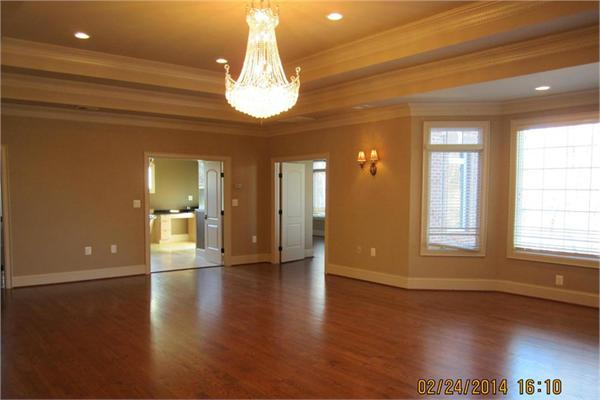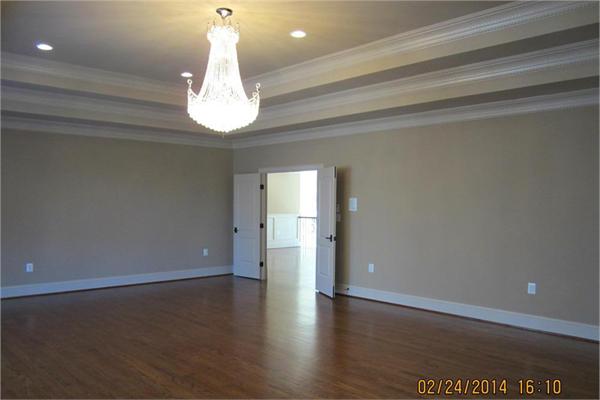Our love affair with Georgian architecture
Gavin Stamp delves into the story behind our love affair with Georgian architecture


Margaret Thatcher may have espoused ‘Victorian values' and been a radical modern-iser, but when she came to consider her retirement, the house she bought in Dulwich Gate, SE21 (but never occupied) was a ‘Winchester': a symmetrical brick neo-Georgian house built by Barratt, with a central pedi-ment and a segmental hood canopy over the central front door.
This was a conspicuously conventional choice. Indeed, the idea that Georgian, however well or badly reinterpreted, represents comfortable English good taste dominated architecture for most of the 20th century, despised or ignored though it may have been by the journals and establishment committed to Modern-ism. And it still does. Georgian was always the standard by which the architecture and design of the Victorians was judged to be vulgar, coarse, excessively moralistic, eclectic, cluttered and tasteless.
In his book on The Victorian Home, published in 1954, Ralph Dutton wrote how: ‘We look back at the eighteenth century as a panorama of all that was finest in the visual arts of this country. In architecture, in decoration, in painting, in the designing of furniture, in the moulding of landscapes; indeed in all that contributed to the pleasure and grace of living, the century seems to stand out as an era of consummate achievement. The whole of the hundred years seems bathed in golden sunlight, while the nineteenth century, like that part of the globe turned away from the sun, is overcast by a sombre grey shadow.' He was not alone in his prejudices.
Why the Georgians should have been so admired for so long is not immediately obvious. Victoria and Albert could be made to seem ridiculous to posterity, but they were at least decent. In contrast, the Georgian monarchs who preceded them were scarcely admirable. The first two were coarse German nonentities. George III may have exhibited a certain bucolic conservatism in his long reign, but he had little impact on national life before he went mad. As for his children, in their immorality and extravagance, they represented everything the Victorians reacted against, even if preposterous George IV can now be regarded as the greatest royal patron of the Arts.
And if the Victorian Age can be seen as one of hypocrisy and class division, of industrial slums, poverty and oppression, the Georgian period was one of much greater poverty and extremes of wealth, of urban anarchy, of dreadful prisons, press-gangs and casual cruelty, of political corruption and privileged oligarchy. The good taste admired by much later gene-rations and so enchantingly glamorised by Rex Whistler was largely the preserve of an entrenched aristocracy.
Interest in Georgian design began surprisingly early and can be traced back to the 1870s, to the ‘Queen Anne' movement, which was a reaction to the High Victorian Gothic Revival. The widespread reappearance of Classical elements from 1900 can be followed in the pages of Country Life as Lutyens adopted his ‘Wrennaissance' Classicism and English Baroque and early-Georgian country houses began to be illustrated.

By the Edwardian decade, Arts-and-Crafts architects saw the Georgian style as a sensible, gentlemanly and quintessentially English way of building and an inventive or free neo-Georgian was widely adopted for smaller country houses and larger suburban ones. Wheels of taste move inexorably and turn full circle. Even before the First World War, not only the plain Georgian urban brick terrace so despised by the Victorians for its drab boredom-was being revived, but there was increasing interest in the austere elegance of the Regency.
Exquisite houses, the beauty of Nature, and how to get the most from your life, straight to your inbox.
In 1931, in Country Life, Christopher Hussey reviewed four examples of neo-Regency interiors and concluded that: ‘It must always be remembered that Regency was the last recognisable style that furniture designers employed before the great debacle of Victorianism. It is thus one of the natural points of departure for the future, and quite the best.' Foreign architects who admired the rational simplicity of late-Georgian design, such as Adolf Loos and Steen Eiler Rasmussen, agreed and much of the best early Modernism can be seen to have developed out of neo-Classicism. But soon came the great divide, with neo-Georgian being regarded as anathema by partisans of the Modern Movement.
The admirers of the Regency-such as Albert Richardson, H. S. Goodhart-Rendel and Lord Gerald Wellesley-reviewed by Hussey were, however, years ahead of public taste, which still had a marked preference for the Tudor and the ‘Olden Times' and, although what John Cornforth called ‘Augustan Nostalgia' resulted in learned volumes on Georgian design, actual examples of Georgian architecture-including the very best-were beginning to tumble.
Georgian London had survived the Victorian and Edwardian decades almost intact, but between the two World Wars a good deal of it disappeared. Nash's Regent Street was rebuilt in the mid 1920s and the great ‘Private Palaces'-London's equivalent of the aristocratic town palaces of Paris, Rome, Vienna and Prague-began to fall as their grand owners sold up, eager to replace them with blocks of flats or offices. There was no protection in law for such masterpieces of Georgian art.
And there was more: Thomas Coram's Foundling Hospital, the Adams' Adelphi, Soane's Bank of England and Rennie's magnificent Waterloo Bridge all disappeared. But the proposal by the Crown Commissioners to rebuild Carlton House Terrace, higher and in stone, was a step too far, and educated opinion began to protest vigorously, leading to the foundation of the Georgian Group in 1937.
The group also campaigned for threatened Georgian squares and it was in a BBC debate Farewell Brunswick Square, in 1938, that Robert Byron, the pugnacious vice-chairman, delivered one of the most eloquent defences of Georgian architecture: ‘It's only Georgian architecture that really suits London,' he insisted. ‘The Georgian style commemorates a great period, when English taste and English political ideas had suddenly become the admiration of Europe. And it corresponds, almost to the point of dinginess, with our national character. Its reserve and dislike of outward show, its reliance on the virtue and dignity of proportions only, and its rare bursts of exquisite detail, all express as no other style has ever done that indifference to self-advertisement, that quiet assumption of our own worth, and that sudden vein of lyric affection, which have given us our part in civilisation.'
It was, however, the Luftwaffe rather than the Georgian Group that stopped the wholesale destruction, for when it was German bombs rather than aristocratic landlords, the dem-ands of the motor car or the asserted needs of national institutions that obliterated buildings by Wren, Adam, Soane or Nash, it was barbarism, an affront to civilisation. In the climate of the Second World War, when the nation's architectural heritage seemed threatened and therefore all the more precious, serious steps were at last taken to protect it and the Town & Country Planning Act of 1947 established the mechanism for listing buildings of architectural and historical importance built before 1850. The Georgian heritage was now largely safe, in theory, even though many Georgian buildings would go in the great postwar holocaust of country houses, which reached a crescendo in 1954.
Much neo-Georgian architecture continued to be built after 1945, despite the disapproval of Modern-ists. It had been used for the many blocks of working-class housing erected by the London County Council and other authorities as well as for private blocks of flats. An urbane, gentlemanly neo-Georgian was the favoured style of the Office of Works for the fine post offices and telephone exchanges that are such an under-appreciated enhancement of so many towns and cities. The style was often also employed for new university halls of residence, for council offices and libraries.
These interpretations of the Georgian model were, admittedly, often pedantic and dull (not that excitement is necessarily an architectural virtue), but in the hands of intelligent modern progressive Classicists, such as McMorran and Whitby, the tradition was capable of imaginative development. It must be doubted, however, whether the wider public was yet fully enamoured of the Georgian. Writing in 1952, Reginald Turnor suggested that the ‘basic taste' of the average Englishman ‘follows the course of history: just as that seems to the schoolboy most colourful in the time of the Tudors and Stuarts, a little stodgy in the Georgian era, and altogether too grey and complicated throughout the Victorian period, so we most of us start off with an affection for half-timber, tall chimneys, and mullioned windows.

The very haphazardness, inconsistency, and lack of orderliness of old houses seem warm and lovable and romantic; infinitely more attractive to the basic taste than the symmetrical dignity and exactness of Georgian buildings'. However, in the second half of the 20th century, the dominance of the taste for the Georgian became widespread and entrenched. This had much to do with the cult of the country house.
In The Inspiration of the Past, his 1985 study of country-house taste in the 20th century, John Cornforth observed that ‘the preservation move-ment has been an essentially middleclass one, and that is of significance in the growth of the National Trust. The Trust has achieved an effective alliance between owners of country houses, most of whom have inherited their property, and people of different backgrounds and enthusiasms prepared to work for the preservation of landscape, buildings and works of art; and together they have won widespread public support'.
Many of the houses now coming to the Trust were Georgian and the aristocratic owners of such buildings were beginning to appreciate and improve them with the help of interior decorators such as John Fowler. And when such owners rebuilt their seats, the result, inevitably, would be neo-Georgian. As John Martin Robinson wrote in his 1984 book on The Latest Country Houses: ‘The general run of upper-class taste has been Georgian for the last fifty or sixty years. Landowners prefer well-proportioned rooms with high ceilings and cornices, long windows overlooking fine views... wall space for hanging family portraits, and marble chimneypieces with log fires.'
This taste filtered down to a younger generation interested in preservation and who aspired to living in one of the many surviving small late-Georgian terraced houses in places such as Islington and Kennington or in the earlier and grander houses in Spitalfields. Such people and their tastes were revealingly dissected in the half-serious, half-satirical New Georgian Handbook by Alexandra Artley and John Martin Robinson, published in 1985.
‘Suddenly, in the Eighties, art history became a powerful force,' the authors explained. ‘Modernism caused social devastation-it was a catastrophic style. For everybody, now it is back to Coronation Street bricks and order, Englishness and the Georgian Rules of Taste. A New Georgian loves the town because it is full of things going on in noble shapes called buildings. But Georgies visit the country and may even have a house there.'
Of course, such people were not exclusively interested in the 18th century, but what is surely significant is that, today, the Georgian Group (which soon after its foun-dation could boast 33 peers of the realm among its members) has a large membership and is somehow smarter than either the Society for the Protection of Ancient Buildings or the Victorian Society, let alone the Twentieth Century Society. Perhaps the real explanation for the continuing veneration for things Georgian is good old-fashioned English snobbery?
* Subscribe to Country Life and save
* Follow Country Life magazine on Twitter
Country Life is unlike any other magazine: the only glossy weekly on the newsstand and the only magazine that has been guest-edited by His Majesty The King not once, but twice. It is a celebration of modern rural life and all its diverse joys and pleasures — that was first published in Queen Victoria's Diamond Jubilee year. Our eclectic mixture of witty and informative content — from the most up-to-date property news and commentary and a coveted glimpse inside some of the UK's best houses and gardens, to gardening, the arts and interior design, written by experts in their field — still cannot be found in print or online, anywhere else.
